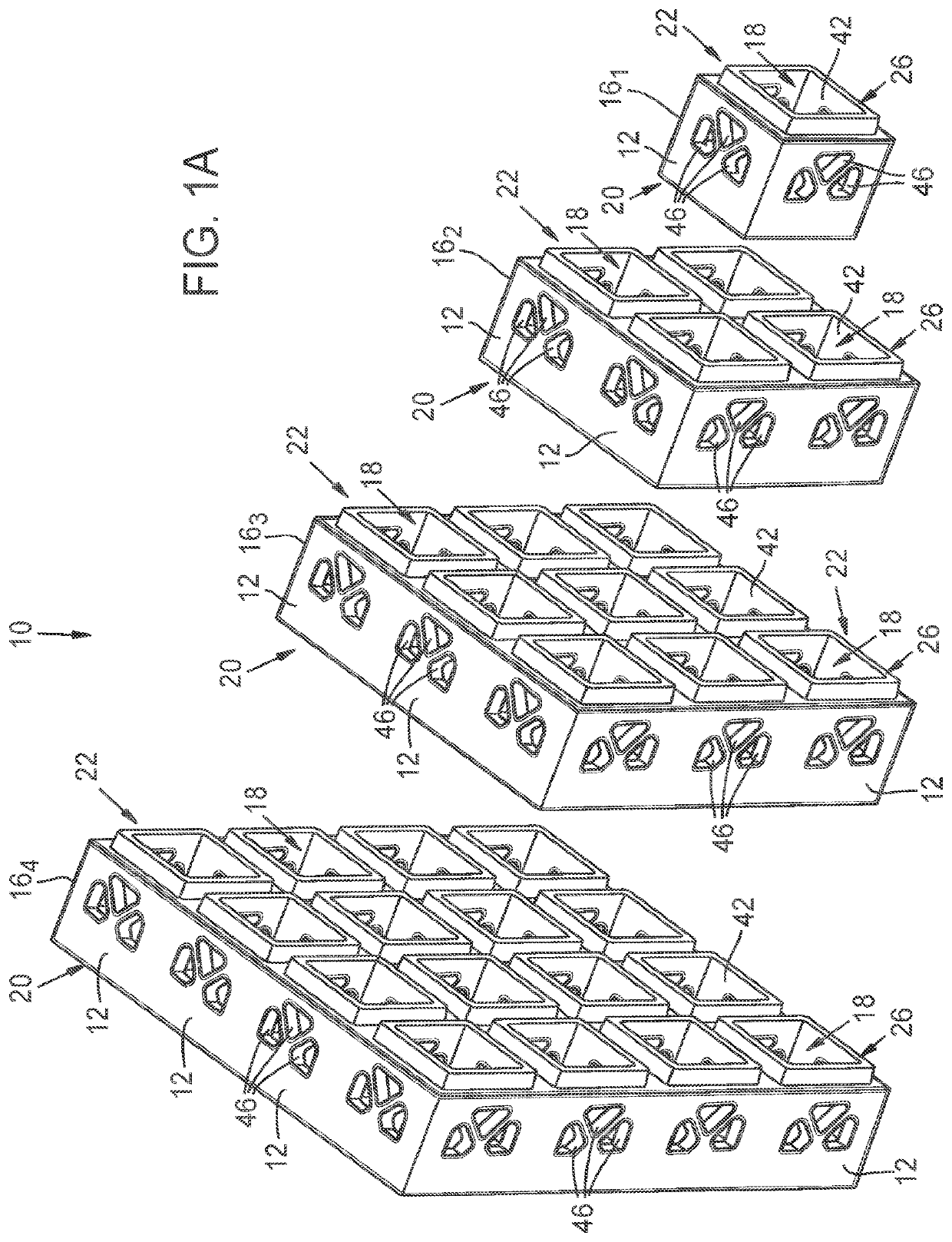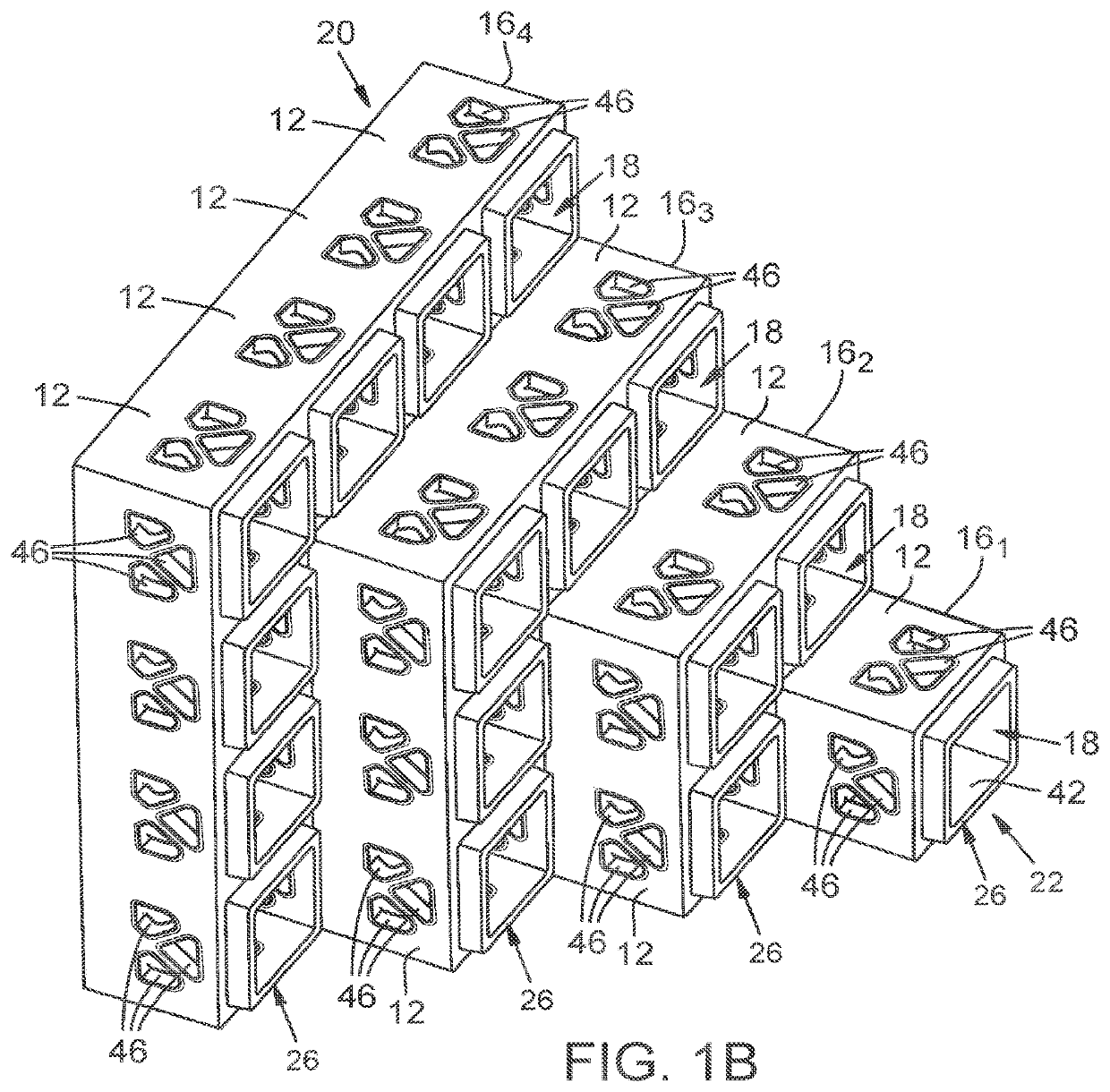Modular synthetic tissue-graft scaffold
a scaffold and modular technology, applied in the field of modular scaffold cages, can solve the problems of poor scalability, specialized equipment and personnel, impede the integration of scaffold printing into the clinical workflow, etc., and achieve the effect of facilitating tissue regrowth
- Summary
- Abstract
- Description
- Claims
- Application Information
AI Technical Summary
Benefits of technology
Problems solved by technology
Method used
Image
Examples
example
[0049]The following example further describes and demonstrates use of preferred embodiments of the disclosed tissue-graft scaffold 10. The example is given solely for the purpose of illustration and is not to be construed as limiting use of tissue-graft scaffold 10 because many variations thereof are possible without departing from the spirit and scope of uses of tissue-graft scaffold 10. This example demonstrates the benefits of the disclosed modular synthetic tissue-graft scaffold to repair a large-volume bone defect.
[0050]A patient is brought to surgery presenting with a large-volume open fracture. After an evaluation of the soft tissue and adequate debridement of the wound, the surgeon evaluates the open fracture of diseased bone cavity 112 of upper bone 122 as shown in FIG. 9 for the presence of vascularized and devascularized bone fragments. Any bone fragments that are completely devascularized are removed, leaving a dead space that must be closed.
[0051]After a study of the th...
PUM
| Property | Measurement | Unit |
|---|---|---|
| thickness | aaaaa | aaaaa |
| depth | aaaaa | aaaaa |
| width | aaaaa | aaaaa |
Abstract
Description
Claims
Application Information
 Login to View More
Login to View More - R&D
- Intellectual Property
- Life Sciences
- Materials
- Tech Scout
- Unparalleled Data Quality
- Higher Quality Content
- 60% Fewer Hallucinations
Browse by: Latest US Patents, China's latest patents, Technical Efficacy Thesaurus, Application Domain, Technology Topic, Popular Technical Reports.
© 2025 PatSnap. All rights reserved.Legal|Privacy policy|Modern Slavery Act Transparency Statement|Sitemap|About US| Contact US: help@patsnap.com



